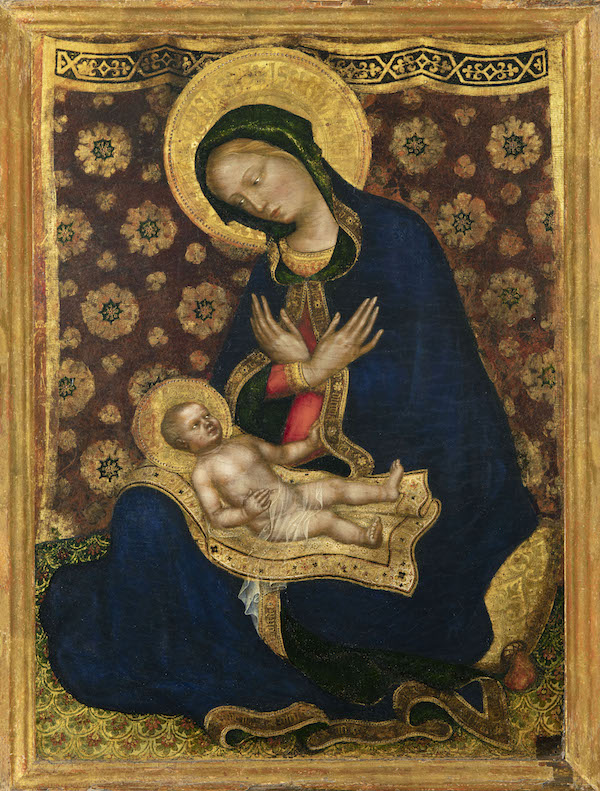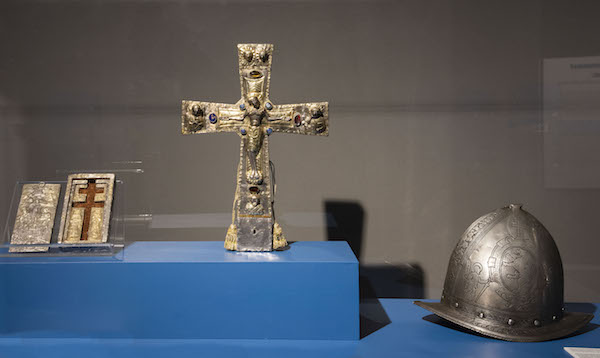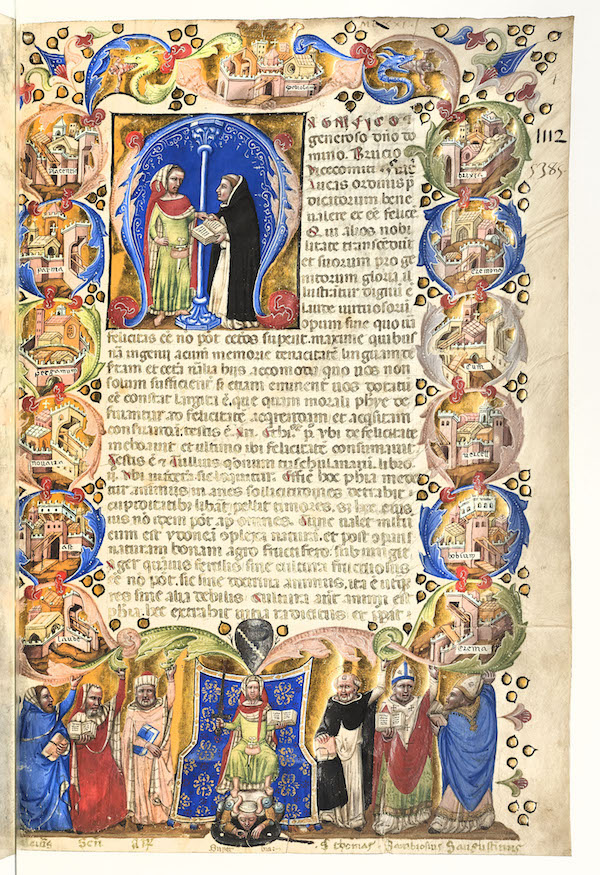Massimo Tapparelli d’Azeglio (Turin, 1798 – Milan, 1866), Il carroccio (The battle of Legnano), 1831. Oil on canvas. Turin, GAM – Civic Gallery of Modern and Contemporary Art
Curated by Matteo Ferrari, researcher at the École Pratique des Hautes Études in Paris, The city of the Lion. Brescia in the age of municipalities and lordships investigates the years ranging from the second half of the 12th century, when the first civic institutions appeared, up to 1426, the beginning of the domination of Venice. Staging the story from tomorrow, October 29, until next January 29, will be a selection of works as rich and lively as the life of the city: sculptures, paintings, illuminated manuscripts, but also precious goldsmith objects, coins and rare documents archive, including prestigious loans from Italian and international museums. Like the shining Madonna of Humility by Gentile da Fabrianopreserved in the National Museum of San Matteo in Pisa, which once adorned the lost one Chapel of San Giorgio al Broletto, the residence of the lords of Brescia. To satisfy the refined taste of the Visconti, the Umbrian master embellished the entire environment with sumptuous decorations, arousing the admiration of guests and visitors, but today only a few fragments remain of this jewel.

Gentile da Fabriano (Fabriano, c. 1370 – Rome, 1427), Madonna of Humility, about 1425. Tempera and gold on wood. Pisa, National Museum of San Matteo
“Telling medieval Brescia in an exhibition is a difficult undertaking”, he explains the curator Matteo Ferrari: “Much has been destroyed, much more is attested only through archival evidence, much still cannot be exhibited for reasons of encumbrance or conservation. Through a selection of pieces different in nature and format (imperial diplomas and administrative registers, wall and table paintings, coins and seals, sculptures and goldsmiths), many of which are unknown to the general public, it was however possible to weave, for the first time , an evocative journey through three centuries of history, placing the emphasis both on the events of which the city has been the protagonist, as well as on the men and institutions that, through their activity of government and artistic commissioning, have forged its physiognomy and identity “.
Legendary enterprises begin the story at the Museum of Santa Giulia: we are in the seventies of the twelfth century and the autonomy of the city is at stake in the struggles against Federico Barbarossa. In the nineteenth century, paintings and drawings will celebrate the ferments and victories of this season: on display we will relive it as in a novel in pictures, from Pontida oath by Giuseppe Diotti (Brera Art Gallery) a The carroccio. The battle of Legnano by Massimo Tapparelli d’Azeglio (GAM of Milan), up to Peace of Constance by Giuseppe Bossi (Cabinet of Drawings of the Castello Sforzesco).

“The city of the Lion. Brescia in the age of municipalities and lords”, an image from the exhibition at the Santa Giulia Museum © Brescia Museums Photographic Archive
Along the way we will meet people like Arnaldo da Brescia and Pandolfo Malatesta, artists like Pisanello, Gentile da Fabriano or the Master of Sant’Anastasia, and we will discover the origin of city symbols and traditions, from the rampant lion coat of arms to the cult of the Holy Crosses, while rarely exposed documents will tell the life of the city in its most unusual and curious aspects . But the Middle Ages is also the era in which the architectural identity of Brescia is forged, when the cathedral and the town hall are raised on the square: with the help of a web app created for the occasion by EasyGuide, the itinerary visit will therefore expand beyond the walls of the museum to discover the remains of the medieval city.
“This extraordinary exhibition sheds new light on a formidable period for the history of the city and for the formation of civic identity,” he says the director of the Brescia Museums Foundation Stefano Karadjov: “A multi-object exhibition with a refined set-up and rarely accessible pieces, which also allows us to create a bridge with the municipal age section of the Museum of Santa Giulia, of which the exhibition project is a very strong temporary appendix. A process of enhancement of our Collections which, in addition to the Roman, Lombard and Renaissance grandeur, finally returns to talk about the medieval centuries in a compelling and formative way, on the eve of the year in which Brescia will be the Italian Capital of Culture “.

Luca Mannelli, Compendium moralis philosophiae, before 1346. Paris, Bibliothèque nationale de France © Bibliothèque nationale de France
Read also:
• Ancient or contemporary? Isgrò erases (and rewrites) the history of Brescia
• The great painting of Bergamo and Brescia is staged at Palazzo Martinengo
• Capital of Culture 2023: Bergamo and Brescia unveil the “Illuminated City”

